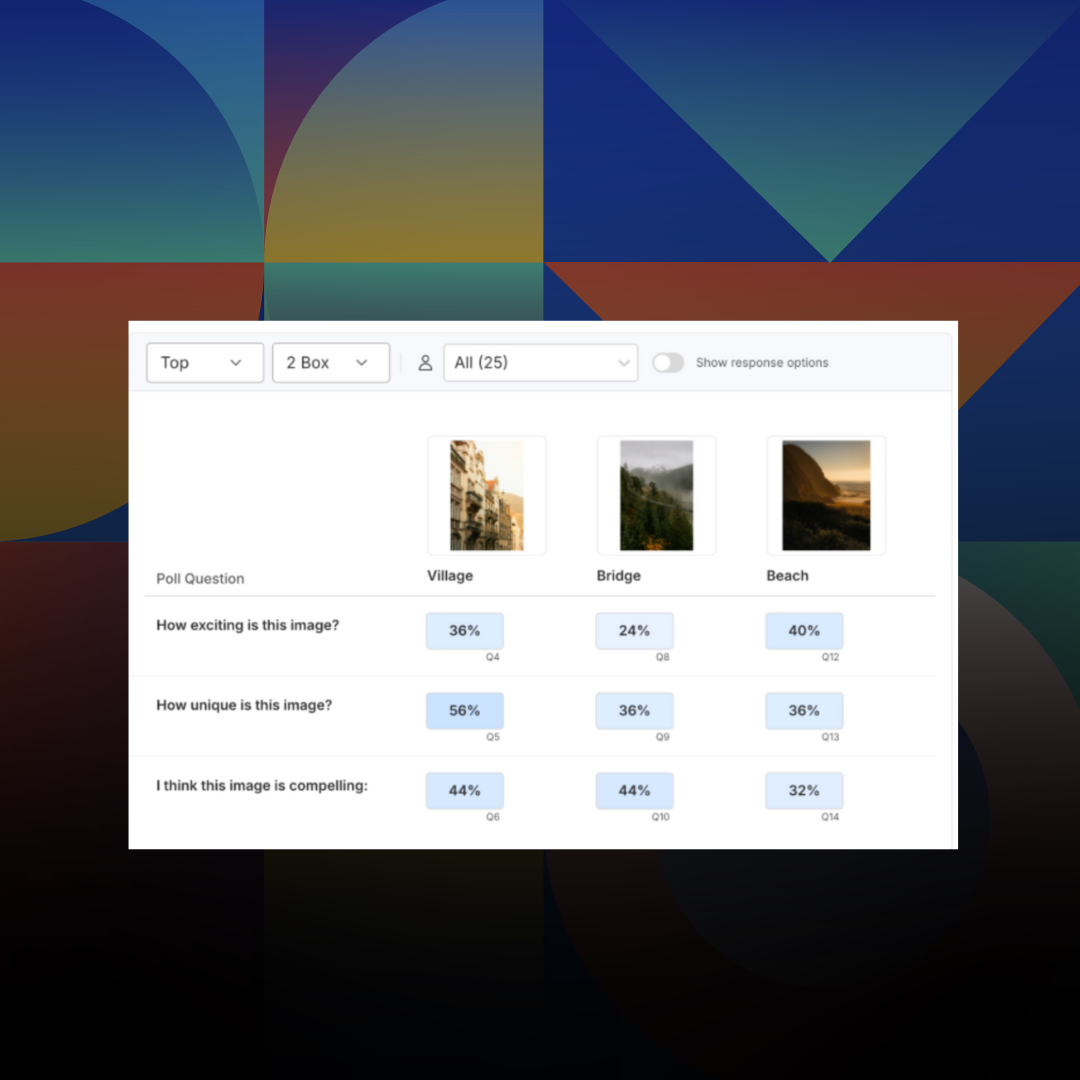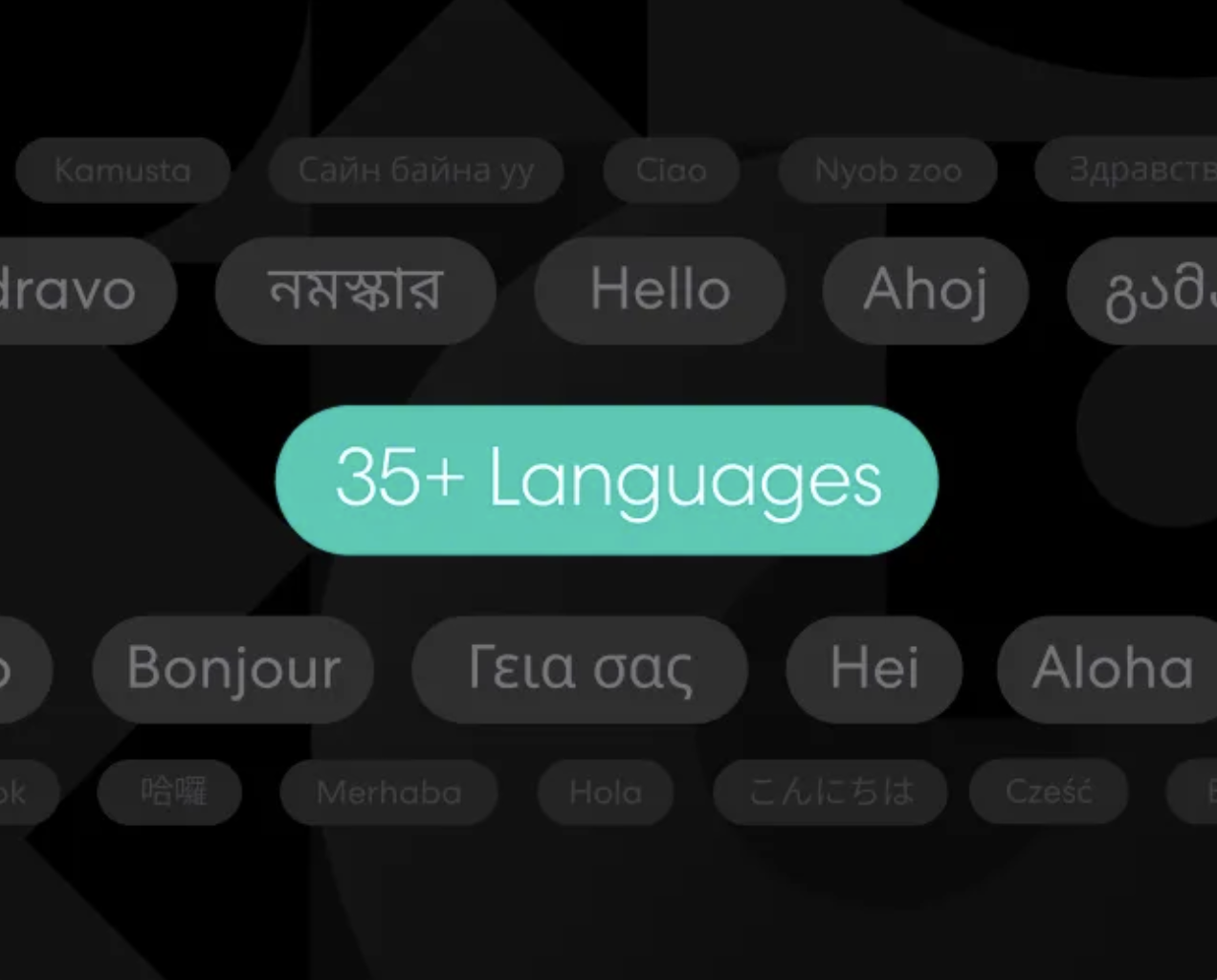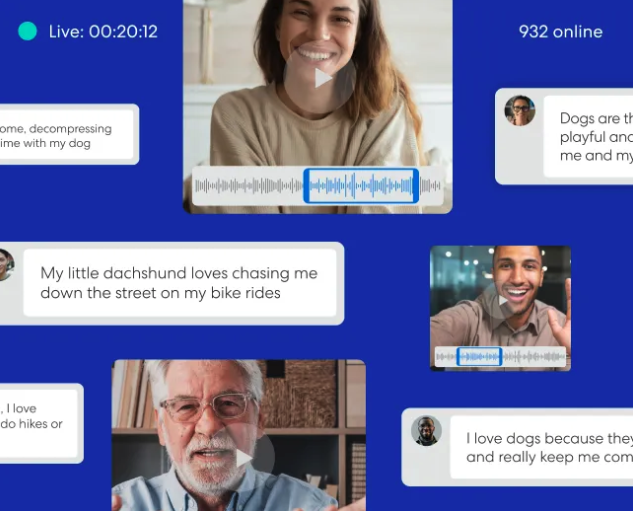
Research 101
Introducing: Poll Comparison - Streamline Concept Testing and Make Better Decisions Faster
Emmet Hennessy
November 24, 2025
Market Research
Articles

Research 101
Introducing: Poll Comparison - Streamline Concept Testing and Make Better Decisions Faster
Emmet Hennessy
November 24, 2025
Market Research
Articles

AI
Purpose-Built for Research AI is Here - a Letter from the CPO
Jessica Dubin
October 21, 2025
Market Research
Articles

AI
Purpose-Built for Research AI is Here - a Letter from the CPO
Jessica Dubin
October 21, 2025
Market Research
Articles

Advanced Research
Unlock Agile Global Insights: Using Remesh Multi-Language Conversations for Research Across Audiences
Customer Success Team
October 14, 2025
Market Research
Articles

Advanced Research
Unlock Agile Global Insights: Using Remesh Multi-Language Conversations for Research Across Audiences
Customer Success Team
October 14, 2025
Market Research
Articles

AI
The Prompt Is the New Moderator Guide
Anthony Lam
September 16, 2025
Market Research
Articles

AI
The Prompt Is the New Moderator Guide
Anthony Lam
September 16, 2025
Market Research
Articles

AI
Building an AI-Ready Research Stack: Beyond Data Preparation
Anthony Lam
September 9, 2025
Market Research
Articles

AI
Building an AI-Ready Research Stack: Beyond Data Preparation
Anthony Lam
September 9, 2025
Market Research
Articles

AI
Agentic AI for Research: A Practical Primer
Dan Reich
September 2, 2025
Market Research
Articles

AI
Agentic AI for Research: A Practical Primer
Dan Reich
September 2, 2025
Market Research
Articles

Advanced Research
Webinar Recap: Unlocking Depth at Scale - Remesh Video for Researchers
Customer Success Team
August 5, 2025
Market Research
Webinars

Advanced Research
Webinar Recap: Unlocking Depth at Scale - Remesh Video for Researchers
Customer Success Team
August 5, 2025
Market Research
Webinars

Transparency in AI: How Remesh Builds Trust Through Responsible Implementation
Ross Coudeyras
July 21, 2025
Articles

Transparency in AI: How Remesh Builds Trust Through Responsible Implementation
Ross Coudeyras
July 21, 2025
Articles

Advanced Research
Webinar Recap: Turning Employee Engagement Insights into Action with Remesh
Customer Success Team
June 16, 2025
Employee Research
Articles

Advanced Research
Webinar Recap: Turning Employee Engagement Insights into Action with Remesh
Customer Success Team
June 16, 2025
Employee Research
Articles
Three Ways to Energize Your Employee Listening Program
Improve your employee listening program with effective feedback methods. Discover how to avoid survey fatigue and gather valuable insights.



If your organization is like most, your leaders and managers are desperate for employee feedback. And if your employee listening program is like most, you rely on surveys—engagement surveys, pulse surveys, onboarding surveys, exit surveys—to gather this feedback.
But here is the problem: it does not take much for survey fatigue to set in. We see signs of this all the time. Using Auto Code, our large language model (LLM) content coding feature within the Remesh platform, we recently helped one of our clients analyze over ten thousand written comments from their quarterly pulse surveys. As we combed through employees’ suggestions for ways to improve organizational performance, our LLM found several critical comments about the survey itself. “Can you vary the questions of this survey more?” wrote one employee. “If it's going to be the same questions every time, I'm going to stop responding. Nothing has changed.”
The importance of employee listening
When employees shut down and opt out of the feedback process, numerous workplace problems can emerge. Researchers have found that employee silence is associated with employee burnout, job dissatisfaction, abusive leadership, and unethical behavior. Effective listening, on the other hand, is associated with employee engagement, commitment, collaboration, innovation, customer service, and job performance. In our research, we found that employees value effective listening and are eager to engage in meaningful conversations about a wide range of workplace topics regularly.
Three practices to energize employee listening
So, what is the best way to gather regular feedback without fatiguing your workforce? Based on our experience, these three practices can energize employee listening campaigns and revitalize organizational listening programs.
Take a conversational approach
Most traditional surveys are composed of closed-ended questions and five-point response scales, perhaps with a few write-in comments at the end. While closed-ended questions can provide valuable data about attitudes and evaluations, they also put employees in a box, limiting their ability to voice their thoughts and share their perspectives.
New insights and ideas, developing crises and opportunities, emerging challenges and trends, latent hopes and fears—this is the critical information that organizations need to fully understand their workforce, their business, and the external environment. The only way to gather this feedback is by engaging employees in an ongoing, open-ended dialogue about their thoughts and feelings, their observations and concerns. The Remesh platform allows organizations to engage in online conversations at scale. Using a mix of open and closed-ended items, organizational researchers and listening leads can ask a mix of open and closed-ended items and capture both qualitative and quantitative data. Employees, in turn, can express themselves beyond the constraints of a Likert scale and give full voice to their insights and experiences.
Find out what effective listening means to your employees
Researchers have found that the effectiveness of workplace listening depends on the extent to which employees feel valued, heard, and heeded. This means that when it comes to organizational listening, process matters. No matter how empirically rigorous and psychometrically sound your methods and instruments are, you run the risk of alienating your workforce if you design listening campaigns without your employees in mind. When we help clients develop listening programs, we conduct a Live or Flex conversation with a cross-section of employees. Using a series of open and closed-ended questions, we explore what effective listening looks like from an employee perspective. While findings vary across organizations, three themes often emerge.
Safety
Employees expect listening programs to be psychologically safety. They seek open feedback channels where they can express their ideas without fear of retribution or negative consequences. Platforms like Remesh, which allow employees to voice their opinions while protecting their anonymity, are valued.
Inclusivity
Employees want listening practices to be culturally inclusive and speak to them in their own language. In today’s global world, it is easy for things to get lost in translation. Employees have told us that when they can engage in meaningful dialogues in their native language, they feel more included and empowered and they are more likely to participate. That’s why our platform allows researchers to design, translate, and conduct multi-language conversationsin more than 30 languages at once.
Openness and transparency
Employees value listening practices that are open and transparent. Many employees tell us that their survey process feels like a black box. They provide thoughtful responses and rich comments but then receive feedback reports that do not reflect their input. In the process, they feel unheard. The Remesh platform was designed to prevent this black box effect. As employees participate in a Remesh conversation, they can see how their ideas and opinions compare with their peers. This allows all participants to understand the depth and breadth of ideas that exist within their organization.
Accelerate time to insight and action
Employee listening efforts are only successful if they create energy and change within an organization. Unfortunately, this is where traditional survey programs often falter. Many leaders, managers, and employees we talk to complain that the process takes too long, spanning weeks and months. By that time, the feedback is outdated. In today’s volatile business environment, many organizations want a nimbler process. To help our clients accelerate their listening efforts, we have added several new AI-powered capabilities to the Remesh platform. For example, Auto Code allows researchers to code and categorize thousands of open-ended comments in minutes, not days. Thematic Clusters can be used to surface latent themes that exist within vast amounts of qualitative data. And Summarize can be used to generate easy-to-understand narrative summaries of complex employee feedback.
Conclusion: Embracing new approaches to employee listening
Navigating today’s business environment requires a steady stream of feedback. Based on our research, the good news is that employees are eager to share their opinions, observations, and ideas frequently. But they want to do so in ways that are open, inquisitive, conversational, and consequential. If your organization is relying solely on traditional surveys to listen to your workforce, you may be creating more frustration and fatigue than energy and insights. Now could be a good time to explore new approaches to employee listening. To learn more about how Remesh is helping organizations develop more effective employee listening programs, or to request a demo, please contact us.
-
Lorem ipsum dolor sit amet, consectetur adipiscing elit. Suspendisse varius enim in eros elementum tristique. Duis cursus, mi quis viverra ornare, eros dolor interdum nulla, ut commodo diam libero vitae erat. Aenean faucibus nibh et justo cursus id rutrum lorem imperdiet. Nunc ut sem vitae risus tristique posuere.
-
Lorem ipsum dolor sit amet, consectetur adipiscing elit. Suspendisse varius enim in eros elementum tristique. Duis cursus, mi quis viverra ornare, eros dolor interdum nulla, ut commodo diam libero vitae erat. Aenean faucibus nibh et justo cursus id rutrum lorem imperdiet. Nunc ut sem vitae risus tristique posuere.
-
More

Introducing: Poll Comparison - Streamline Concept Testing and Make Better Decisions Faster

.png)

.png)
Read More

.png)
.png)
.png)

.png)

.png)
Learn More

.png)
.png)
.png)


Unlock Agile Global Insights: Using Remesh Multi-Language Conversations for Research Across Audiences

.png)

.png)
Read More

.png)
.png)
.png)

.png)

.png)
Learn More

.png)
.png)
.png)
Stay up-to date.
Stay ahead of the curve. Get it all. Or get what suits you. Our 101 material is great if you’re used to working with an agency. Are you a seasoned pro? Sign up to receive just our advanced materials.




